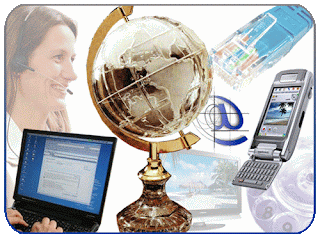Unidad 3. Técnicas de lectura: predicción, scanning y skimming
Seleccione un texto que tenga una imagen.
Observe la imagen y conteste las siguientes preguntas.
De acuerdo al título y la imagen: ¿cuál cree usted que es el tópico que está a punto de leer?
¿Cuál es la idea general del texto?
¿Que palabras se repiten?
¿Que palabras se parecen al español?
¿Cuales son las palabras en negrita, el titulo, subtitulo o gráficos que te ayudan a entender el texto?
¿De qué trata el texto? Lee el primer párrafo y el último o la ultimas ideas del último párrafo.
Technology
Technology is the usage and knowledge of tools, techniques, crafts, systems or methods of organization in order to solve a problem or serve some purpose. The word technology comes from Greek τεχνολογία (technología); from τέχνη (téchnē), meaning "art, skill, craft", and -λογία (-logía), meaning "study of-".[1] The term can either be applied generally or to specific areas: examples include construction technology, medical technology, and information technology.
Technologies significantly affect human as well as other animal species' ability to control and adapt to their natural environments. The human species' use of technology began with the conversion of natural resources into simple tools. The prehistorical discovery of the ability to control fire increased the available sources of food and the invention of the wheel helped humans in travelling in and controlling their environment. Recent technological developments, including the printing press, the telephone, and the Internet, have lessened physical barriers to communication and allowed humans to interact freely on a global scale. However, not all technology has been used for peaceful purposes; the development of weapons of ever-increasing destructive power has progressed throughout history, from clubs to nuclear weapons.
De acuerdo al título y la imagen: ¿cuál cree usted que es el tópico que está a punto de leer?
El cuerpo de tópico, debería hablar de la tecnología y los diferentes tipos que existen actualmente.
¿Cuál es la idea general del texto?
La idea general del texto apunta a definir que es la Tecnologia y los usos que se le pueden dar a la misma
¿Que palabras se repiten?
Human, tools, weapons, technology
¿Cuales son las palabras en negrita, el titulo, subtitulo o gráficos que te ayudan a entender el texto?
tools, techniques
¿De qué trata el texto? Lee el primer párrafo y el último o la ultimas ideas del último párrafo.
El Texto, trata sobre la tecnología, de donde proviene la palabra y lola utilización que tiene en nuestra vida cotidiana, pero también dice el impacto que puede tener en nuestro medio ambiente, si es usada de forma inadecuada
A. Seleccione un texto relacionado con su área de experticia. Lea el texto y extraiga:
· Las definiciones
· Los marcadores de definición
Marketing strategy
Marketing strategy is a process that can allow an organization to concentrate its limited resources on the greatest opportunities to increase sales and achieve a sustainable competitive advantage. A marketing strategy should be centered around the key concept that customer satisfaction is the main goal. Marketing strategy is a method of focusing an organization's energies and resources on a course of action which can lead to increased sales and dominance of a targeted market niche. A marketing strategy combines product development, promotion, distribution, pricing, relationship management and other elements; identifies the firm's marketing goals, and explains how they will be achieved, ideally within a stated timeframe.
B. Seleccione otro texto relacionado con su área de experticia y extraiga las palabras de secuencia u ordenamiento del tiempo.
Marcadores de Tiempo
Idea general del párrafo
William Henry "Bill" Gates III, (born October 28, 1955)[3] is an American business magnate, philanthropist, author, and is chairman of Microsoft, the software company he founded with Paul Allen. He is consistently ranked among the world's wealthiest people[4] and was the wealthiest overall from 1995 to 2009, excluding 2008, when he was ranked third.[5] During his career at Microsoft, Gates held the positions of CEO and chief software architect, and remains the largest individual shareholder, with more than 8 percent of the common stock.[6] He has also authored or co-authored several books.
Gates is one of the best-known entrepreneurs of the personal computer revolution. Although he is admired by many, a number of industry insiders criticize his business tactics, which they consider anti-competitive, an opinion which has in some cases been upheld by the courts.[7][8] In the later stages of his career, Gates has pursued a number of philanthropic endeavors, donating large amounts of money to various charitable organizations and scientific research programs through the Bill & Melinda Gates Foundation, established in 2000.
Gates stepped down as chief executive officer of Microsoft in January 2000. He remained as chairman and created the position of chief software architect. In June 2006, Gates announced that he would be transitioning from full-time work at Microsoft to part-time work, and full-time work at the Bill & Melinda Gates Foundation. He gradually transferred his duties to Ray Ozzie, chief software architect, and Craig Mundie, chief research and strategy officer. Gates' last full-time day at Microsoft was June 27, 2008. He remains at Microsoft as non-executive chairman.
Marcadores de Tiempo
October 28, 1955
1995 to 2009
Excluding 2008
established in 2000
January 2000
In June 2006
June 27, 2008
IDEA GENERAL DEL TEXTO
El texto se refiere a la vida del magnate de Tecnología Bill Gates


No hay comentarios:
Publicar un comentario